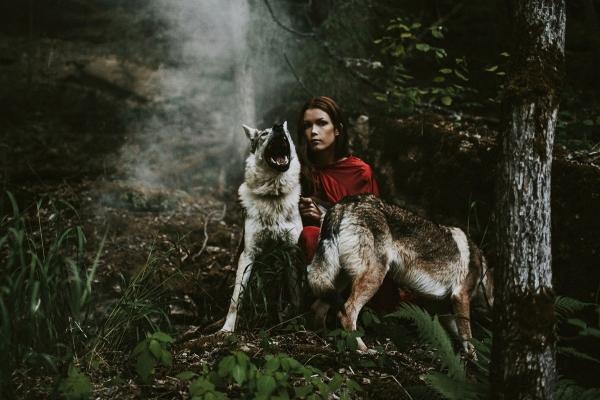This blog post was written by our student ambassador Ana, a student of the semiotics programme at the University of Tartu.
Did you know that Estonia has the largest collection of folk tales in the entire Europe? Folklore and heritage are one of the proudest parts of Estonian culture and tradition. The first written texts of Estonian literature came out of folklore, so the folklore actually marks the beginning of Estonian literature.
In this blog, we will talk about Estonian folklore and folk tales that Estonian grandparents used to tell to their grandchildren, tales that were passed on from one generation to another and thus formed a huge role in the oral tradition and cultural heritage of Estonia.

Photo credit: Paul Meiesaar
Two of the most famous collectors of Estonian folk tales and fairy tales were Friedrich Reinhold Kreutzwald, who is also considered to be the author of the Estonian national epic Kalevipoeg, and Jakob Hurt. The collections are preserved in the Estonian Literature Museum (Eesti kirjanduse muuseum ) in Tartu.
_0.jpg)
Photo: Kalevipoeg
Estonian folk tales often center around the forest and forest life, as the forest is a major symbol of Estonian nature and culture. The common characters in these tales include:
- Young people who wander through the forest
- Animals with distinct personalities, like the cunning fox, the foolish wolf, and the naive bear
- Forest spirits and fairies
- The rulers of the forest, who are responsible for maintaining order and peace, and punishing those who break the forest's rules.
- Vanapagan or the devil, who tricks people into signing contracts to claim their souls, but often ends up being outsmarted.
Many Estonian legends and myths also originate from these folk tales. For example, stories about the lost language of trees, why the fox's tail has a white tip, and why the rabbit has split lips.
Here are a couple of fairy tales from the book Deep in the Forest: One Hundred Estonian Fairy Tales about the Forest and its People; a collection of Estonian fairy tales from all the regions of Estonia, which was put together by the Estonian folklorist Risto Järv. Here are the tales:
Good deed of the forest spirit
A group of hunters, together with their sons and dogs, went to the forest to hunt. During the hunt, an old man who presents himself as a beggar approaches them and asks them for some food. The hunters give him food, but when the old man asks for more, they explain that the rest of the food is for their children and dogs. The old man then turns into a giant creature that the hunters recognize as Vanapagan. Vanapagan starts eating the hunters' children and dogs and points out to the hunters an eagle flying in the sky. Vanapagan threatens the hunters that they too will be his victims if they do not manage to hit the eagle with just one shot by noon tomorrow. The hunters are in fear and despair, and then an old wise man approaches them and gives them a silver bullet, and tells them that one shot with this bullet is enough and the eagle will fall to the ground. The hunters listen to the old sage who was actually a forest spirit in disguise and shoot the eagle with a silver bullet. The eagle fell to the ground and sons and dogs came out of its womb.
The Collar
An old man and an old woman lived in a hut near the forest. The old woman asks the old man to go to the market to buy fish. After buying the fish, the old man was passing through the forest in his carriage. The fox smells the fish and makes a plan to get to it.
The fox lies down in the middle of the road, pretending to be dead. Seeing this, the old man picked up the fox and placed it next to the fish, hoping to make a collar for his wife. The fox manages to escape with the fish in its mouth.
The wolf sees the fox eating the fish and asks to give him a piece too. The fox explains to the wolf how she caught the fish by inserting her tail into the hole in the frozen lake and advises the wolf to do the same if he wants to catch the fish. The wolf went to the frozen lake and put his tail in the hole.
The wolf waits for the fish to bite his tail, but nothing happens and his tail gets heavier and heavier. The wolf thought that he had caught a lot of fish because of that. People spot a wolf on the lake and grab their weapons to kill it.
The wolf tries to pull its tail out of the hole but fails. The wolf pulls harder and is thus left without its tail, which had frozen in the lake. So, he loses his tail and does not get the fish as well, thanks to the scheming of a fox.
I hope you will enjoy this blog about Estonia's folk tradition and after reading it, you might be interested in learning more about Estonian folklore and heritage.
Read more blog posts:
